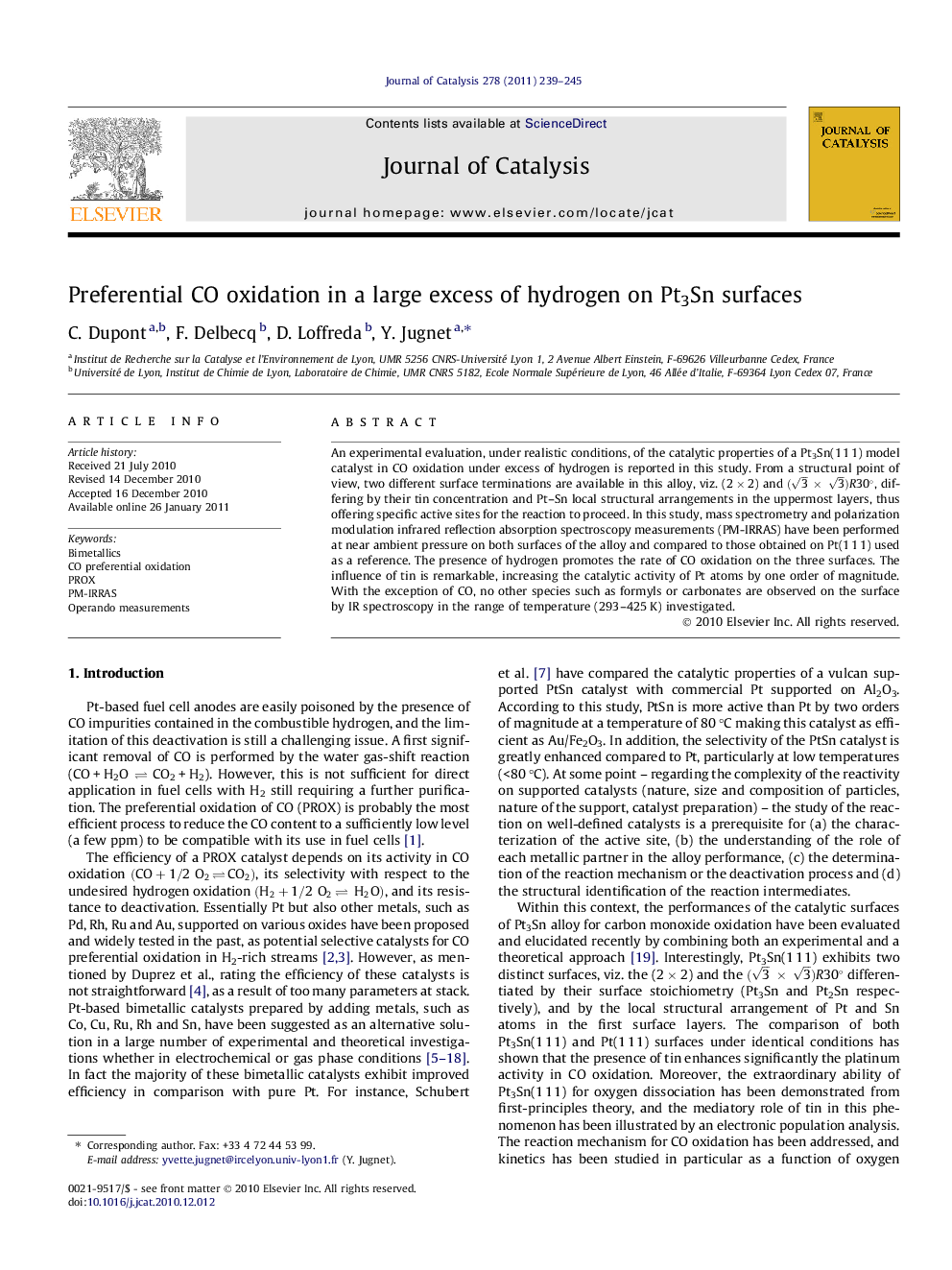| کد مقاله | کد نشریه | سال انتشار | مقاله انگلیسی | نسخه تمام متن |
|---|---|---|---|---|
| 61757 | 47604 | 2011 | 7 صفحه PDF | دانلود رایگان |

An experimental evaluation, under realistic conditions, of the catalytic properties of a Pt3Sn(1 1 1) model catalyst in CO oxidation under excess of hydrogen is reported in this study. From a structural point of view, two different surface terminations are available in this alloy, viz. (2 × 2) and (3×3)R30°, differing by their tin concentration and Pt–Sn local structural arrangements in the uppermost layers, thus offering specific active sites for the reaction to proceed. In this study, mass spectrometry and polarization modulation infrared reflection absorption spectroscopy measurements (PM-IRRAS) have been performed at near ambient pressure on both surfaces of the alloy and compared to those obtained on Pt(1 1 1) used as a reference. The presence of hydrogen promotes the rate of CO oxidation on the three surfaces. The influence of tin is remarkable, increasing the catalytic activity of Pt atoms by one order of magnitude. With the exception of CO, no other species such as formyls or carbonates are observed on the surface by IR spectroscopy in the range of temperature (293–425 K) investigated.
Both Sn and H2 promote CO oxidation on Pt3Sn(1 1 1) surfaces. The surface structure sensitivity in CO oxidation is cancelled out when the reaction is performed under a large excess of hydrogen.Figure optionsDownload high-quality image (93 K)Download as PowerPoint slideResearch highlights
► We compare two surfaces of Pt3Sn(1 1 1) to Pt(1 1 1) in CO oxidation both in the absence (COOX) and in the presence (PROX) of hydrogen.
► Linear CO on top of Pt is the only species detected by PM-IRRAS on the three surfaces throughout the CO oxidation at T < 420 K.
► In contrast to COOX, PROX is insensitive to the surface structure.
► Tin and hydrogen promote the CO oxidation reaction.
Journal: Journal of Catalysis - Volume 278, Issue 2, 7 March 2011, Pages 239–245